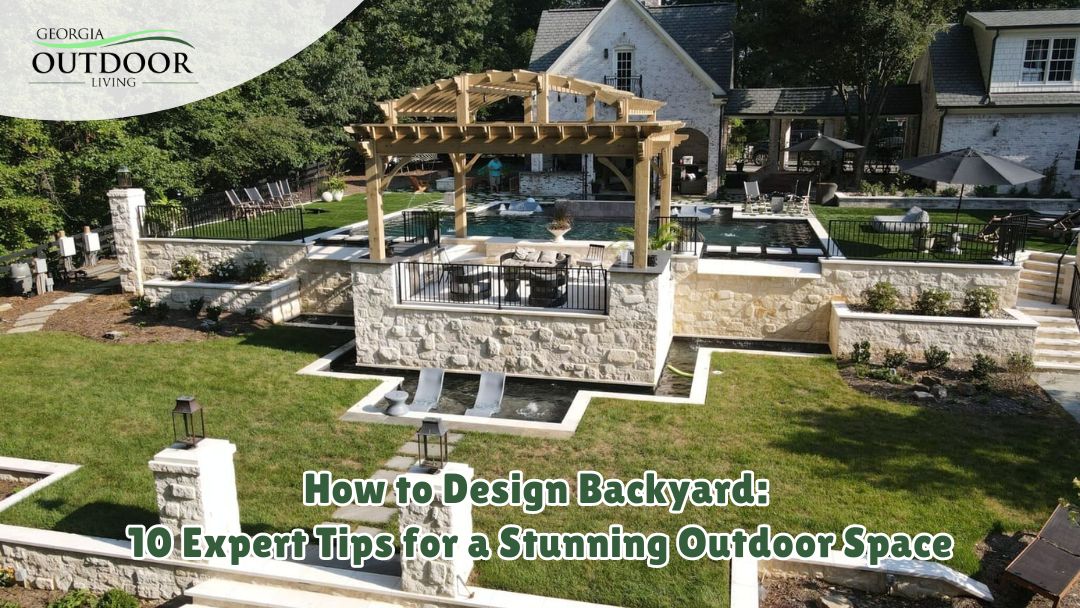Thinking about how to design your backyard? This guide simplifies the process by offering various backyard landscaping ideas tailored to different functions and aesthetics. Start by assessing your space and defining your needs. From there, our expert tips on how to design your yard will help you create a beautiful and functional outdoor area. Whether for relaxation, entertaining, or gardening, we’ve got you covered. Dive in to transform your backyard into a space you’ll truly love!
Key Takeaways
- Thoroughly assess your backyard space and create a base map to inform design decisions based on existing elements and environmental factors.
- Define your needs and wants, prioritize backyard functions, and plan for future growth to ensure the longevity and usability of the space.
- Incorporate sustainable practices, such as native plant selection and efficient water management, to enhance the beauty and ecological health of your backyard.
Assess Your Backyard Space
Before starting your landscape design, thoroughly evaluate your backyard space. Understanding soil quality, water drainage, weather conditions, and existing plant life is essential for creating an effective landscape plan. This initial assessment ensures informed decisions about plant selection and the placement of landscape elements.
Consider environmental factors such as temperature, humidity, precipitation, wind patterns, and sunlight exposure when choosing plants. These aspects not only influence plant health but also impact the overall enjoyment of the area. Recognize immovable features like large trees or driveways as they shape distinct zones within your backyard and guide subsequent landscaping steps. This understanding helps integrate design elements, contributing to a cohesive and visually pleasing outdoor space.
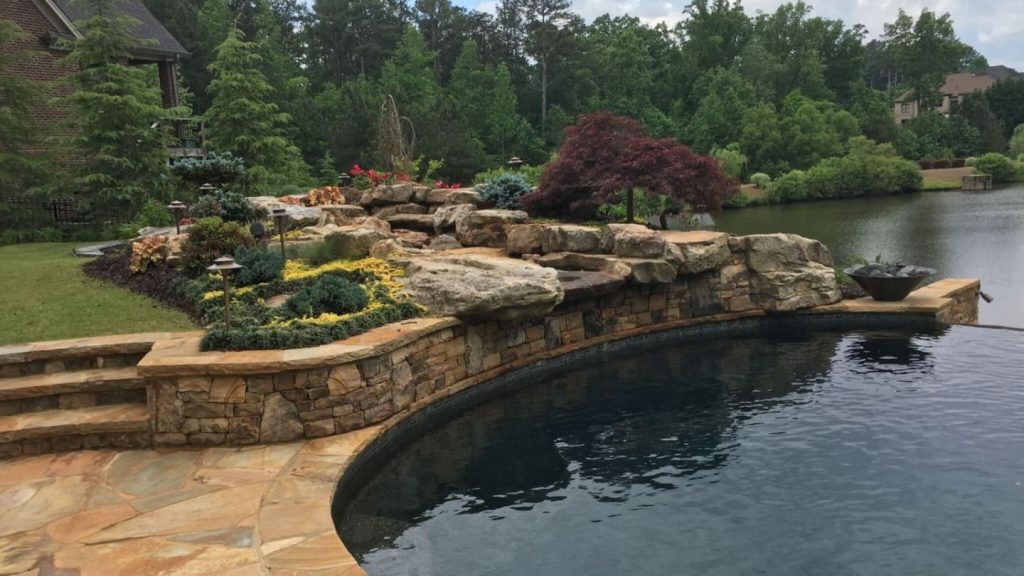
Create a Base Map
Crafting a base map guided by essential landscape design principles is crucial for your garden’s layout. This guide outlines significant elements like driveways and trees, ensuring new designs align with the current structure and limitations of your yard. A well-designed base map aids in strategic decision-making regarding the positioning of new landscape components.
Understand Sun and Wind Patterns
Grasping the movements of the sun and wind enhances the comfort and practicality of your outdoor space. Recognizing these patterns is key for choosing optimal spots for features like patios, seating zones, and plant beds, ensuring year-round enjoyment. is
Define Your Needs and Wants
Start by identifying your desires and requirements to create a garden that aligns with your lifestyle. Your intended use of the space will shape the design, whether for dining, play, gardening, or relaxation.
Dividing your yard into distinct ‘garden rooms’ can create a sense of order and make the space feel larger. This approach ensures each section serves a specific purpose.
Prioritize Functions
Focus on functionality first. Consider privacy needs, space dimensions, and existing elements to make informed design choices. Spend time in your landscape before making changes to identify potential uses and ensure long-term success.
Plan for typical activities such as play areas, family gatherings, or quiet reading spots. Conduct a site inventory and analysis, identify specific needs, and create functional diagrams to guide your design process.
Design Outdoor Rooms
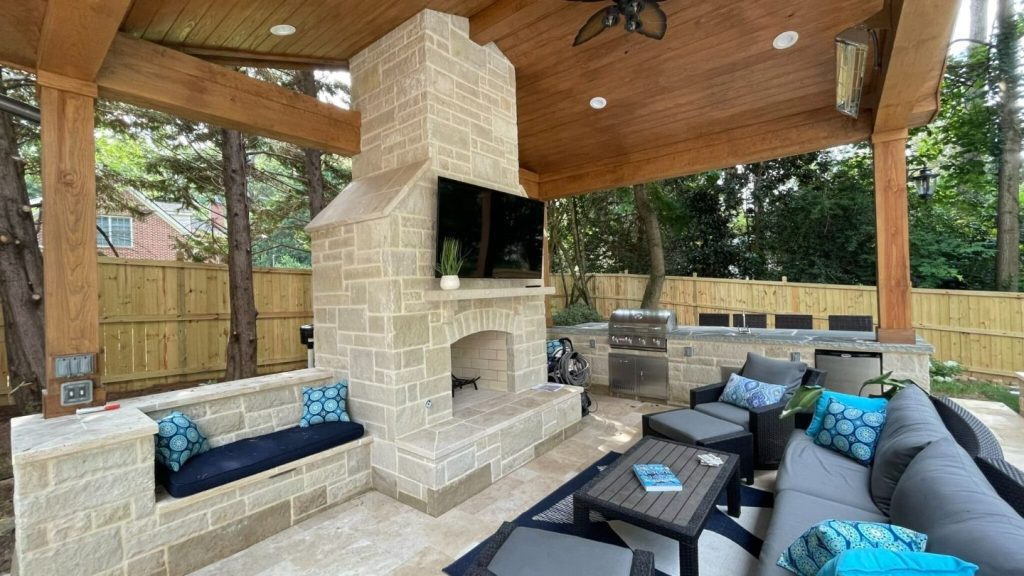
Creating outdoor rooms within your yard can delineate areas for distinct activities, much like the interior spaces of a house. This method promotes both functional and visual order, improving the pleasure derived from your outdoor space.
Employing plants thoughtfully to establish boundaries akin to walls, ceilings, and floors not only augments comfort through microclimate control but also offers seclusion. By dividing areas with conflicting functions in your garden space allows for a more structured arrangement of activity zones, thereby increasing practicality and creating a cozy seating area.
Create Comfortable Seating Areas
Creating an inviting outdoor space hinges on the inclusion of comfortable seating arrangements within your backyard patio. By selecting furniture made from weather-resistant materials, such as wicker, you can achieve both durability and comfort for your area suited to seasonal dining.
In order to cultivate a cozy atmosphere conducive to relaxation within smaller backyards, consider incorporating elements like plush couches and fireplaces alongside ambient lighting. Establishing a snug seating zone can be accomplished by setting up attractive focal points, adding twinkling lights for charm, ensuring the seating is comfortable, and integrating greenery with plants.
Use Pathways to Connect Spaces
Routes throughout your backyard are important for facilitating effortless movement and access, enabling systematic traversal of the space. The construction of these routes can be achieved using diverse materials such as robust concrete, pavers, pulverized gravel, or individual stepping stones to cater to different aesthetic preferences and practical needs.
It is advisable to border these pathways with perennials that offer a continuous display from spring to fall. It’s important not to choose plants that might impede the usability of the paths. Utilizing large paving stones gives you the liberty to craft walkways in innovative and flexible designs.
Choose a Landscape Design Theme
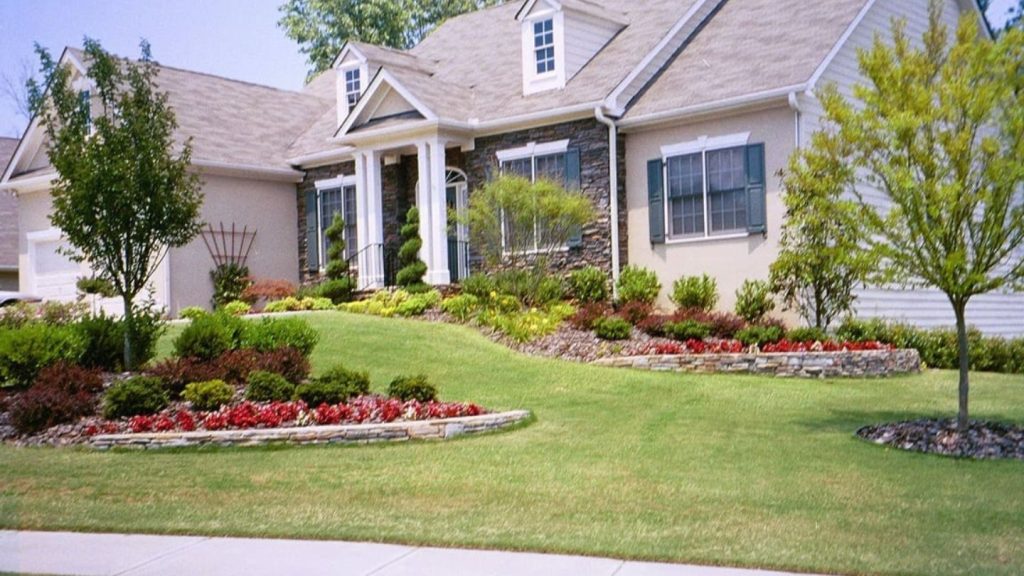
Opting for a specific theme in landscape design can give your outdoor space a unified look and feel. Commonly accepted themes are the English, Japanese, French, and native garden styles, which each bring distinct features and aesthetics to the table. For instance, Mediterranean landscapes typically showcase minimalistic planting schemes coupled with rustic water features and patios crafted from aged bricks.
Adherence to fundamental principles of design, including texture, color, scale, line, and form, is crucial for achieving visual coherence within your landscape arrangement. This attention to detail helps inform choices regarding plants as well as other materials, resulting in a seamless integration of various landscape elements that culminate in an attractive and balanced setting with a clear focal point.
Harmonize Plant Selection
Choosing plants that align with your garden theme plays a vital role in achieving a unified aesthetic for your garden design. Picking out the right plants will help maintain visual harmony across the entire space.
Gardens created in containers provide an attractive element to decks and are also flexible, offering the convenience of relocation. By growing plants in containers, you have the ability to adjust your garden according to seasonal shifts and specific weather patterns local to your area.
Integrate Hardscaping Elements
Incorporating elements such as walls and a stone patio into your garden’s landscape design can considerably improve both its aesthetics and structure. These hardscaping features contribute to the solidity of the design, delineate distinct areas within the space, and increase your backyard’s practicality.
Focus on Plant Selection
The choice of colorful plants plays a vital role in the field of landscape design, shaping both the aesthetic appeal and ecological viability of your garden. Opting for native plants is advantageous due to their adaptation to local climates and their contributions to sustaining regional wildlife populations. Enriching soil with organic matter significantly bolsters its fertility by improving nutrient availability and overall physical structure.
Consistent testing of soil composition reveals any lacking nutrients or pH levels that might hinder plant growth, allowing you to make informed adjustments that foster an ideal environment for your landscape’s flora.
Incorporate Focal Points
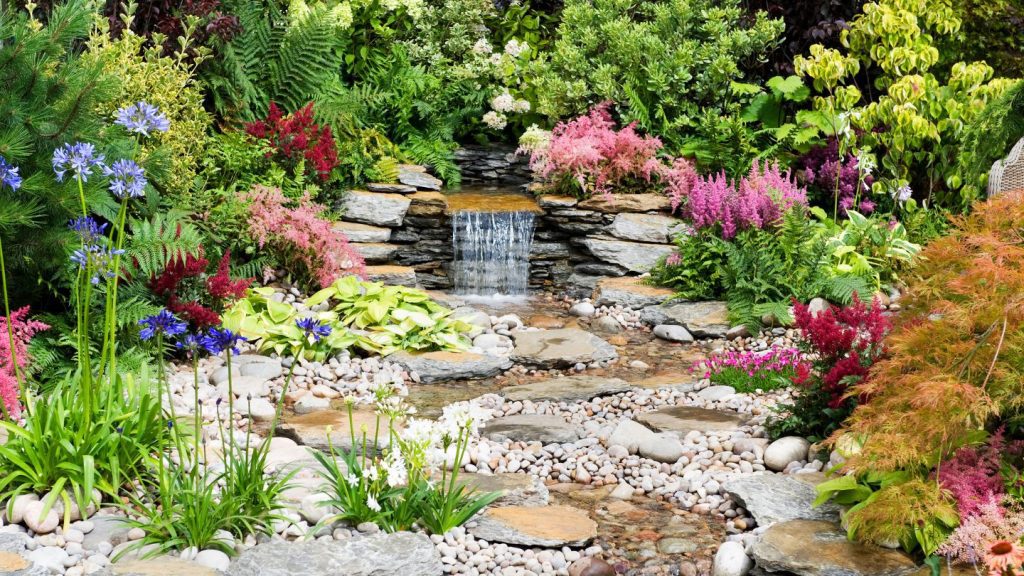
Utilizing focal points within your garden’s landscape design is essential for directing the viewer’s gaze and improving the visual harmony of your outdoor space. Typical examples of elements that serve as focal points are:
- Water features
- Sculptures
- Flower beds
- Seating areas
Highlight Key Areas
To craft an engaging outdoor space, the deliberate positioning of focal points is critical as they capture attention and impart intrigue in key segments of your garden. Effective examples that serve this purpose could be distinctive plants, sculptures, or water features that infuse personality and allure into your landscape.
These components are vital for fashioning a compelling exterior environment that mirrors your individual taste while elevating the visual charm of backyard landscaping concepts like including a fire pit within the design scheme.
Use Lighting for Emphasis
Lighting in the garden can substantially improve the prominence of focal points, fostering a welcoming atmosphere as the evening arrives. By carefully positioning lights, one can craft an environment that prolongs enjoyment time outdoors and transforms your backyard into a charming setting for nighttime leisure.
By introducing illumination near attributes such as water features, their allure is heightened after dark. This addition brings an enchanting quality to your garden space during the night hours.
Plan for Privacy
To craft a private sanctuary in your backyard, it’s crucial to establish seclusion. This can be achieved by constructing a natural barrier with an assortment of trees and shrubs, which heightens privacy. By arranging plants at varying levels, you can bolster the screen’s effectiveness even more.
For augmenting privacy within your outdoor space, employing hedges or standard fencing is typical. Likewise, utilizing plant containers serves as another popular strategy.
Sustainable Landscaping Practices
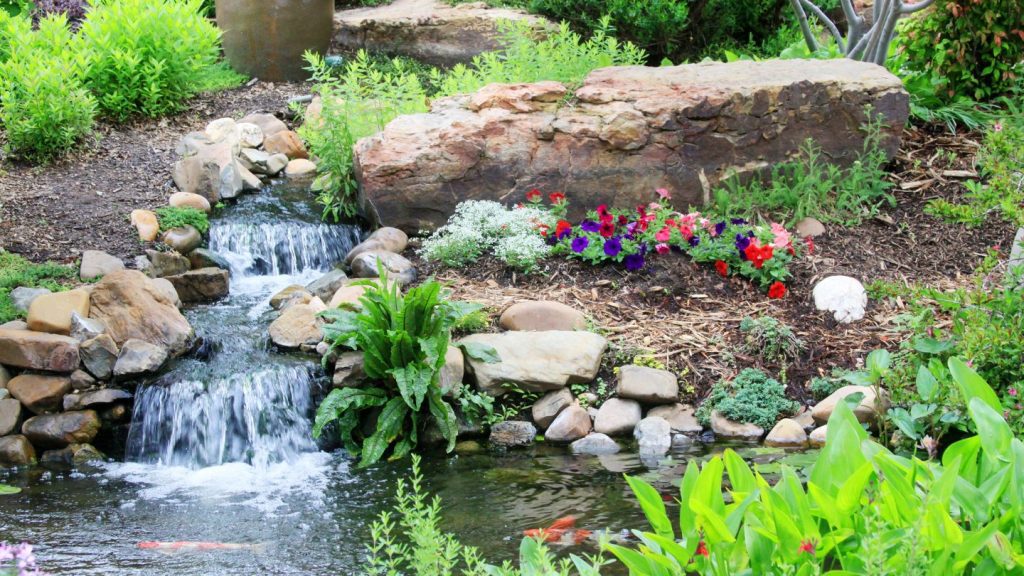
Incorporating native plants into your landscape is essential for resource conservation and aiding local ecosystems. These plants offer support to wildlife and helpful insects, all while demanding minimal upkeep.
Adopting the use of eco-friendly hardscape elements along with repurposing building materials can mitigate environmental harm and manage expenses efficiently. Regular seasonal maintenance designed specifically for your landscape promotes its growth and benefits the well-being of surrounding ecosystems.
Water Management
Effective water management is crucial in sustainable landscape design, conserving resources, and enhancing beauty. Implementing rainwater collection systems optimizes water use, reduces waste, and saves on water costs.
Using drip irrigation can cut water consumption by up to 90% by delivering moisture directly to plant roots. Professional landscape designers can integrate these systems to maximize water efficiency and promote healthy plant growth.
Seasonal Maintenance
To keep your backyard looking great year-round, consistent seasonal maintenance is essential. Regular care ensures your outdoor space remains enjoyable for you and your family.
Pruning and Trimming
Regular pruning and trimming are vital for plant health and aesthetics. Trimming refines the shape, while pruning removes dead or diseased branches to promote growth.
Hedges and shrubs should be trimmed multiple times a year to maintain their shape. Prune plants once a year during dormancy to encourage healthy growth and flowering.
Soil Care
Proper soil care is crucial for a thriving garden. Regular soil testing identifies nutrient deficiencies or pH issues that need correction. Amending the soil improves drainage and nutrient retention, benefiting plant health and robustness.
Pay Attention to Detail
The finishing touches of your backyard design can make all the difference in creating a polished and inviting outdoor space. Paying attention to detail can help you achieve a cohesive and beautiful landscape that reflects your personal style.
Finishing Touches for a Polished Look
Consider the following finishing touches to elevate your backyard design:
- Outdoor lighting: Highlight key features and create an ambiance with strategically placed lights.
- Decorative elements: Add planters, sculptures, and bird baths to enhance visual interest.
Engage Professional Help When Needed
Seeking professional assistance is crucial for intricate landscape endeavors. It’s recommended to employ a landscape designer when there’s a need for thorough planning and collaboration among various contractors.
Georgia Outdoor Living provides all-encompassing services related to outdoor design and construction, which encompass landscape design, hardscaping, and the building of pools, cabanas, outdoor kitchens, and decks.
Summary
Designing a stunning outdoor space involves careful planning, creativity, and attention to detail. By assessing your backyard space, defining your needs, creating outdoor rooms, and incorporating sustainable practices, you can transform your yard into a beautiful and functional oasis. Remember, professional help is available to guide you through the process and ensure your design meets your expectations. With Georgia Outdoor Living, you have access to expert services that can bring your backyard visions to life. Now it’s time to take the first step and start planning your dream outdoor space!

